While Bondi Beach and the Sydney Opera House might be the first things that pop into your mind when planning an Australian adventure, the continent’s national parks offer some of the most remarkable natural spaces you’ll find anywhere on Earth. From dense rainforests to red desert landscapes, Australia’s protected wilderness areas showcase the country’s unique ecosystems and diverse wildlife.
Here are 15 must-visit national parks across Australia where you can spot kangaroos in their natural habitat, walk among ancient trees, and experience the raw beauty of the Outback – all while avoiding the usual tourist crowds.
- Best for hiking trails: Blue Mountains National Park
- Quietest escape: Flinders Chase National Park
- Most unique landscape: Uluru-Kata Tjuta National Park
- Best coastal views: Royal National Park
- Perfect for wildlife: Kakadu National Park
- Best rainforest walk: Daintree National Park
Kakadu National Park, Northern Territory
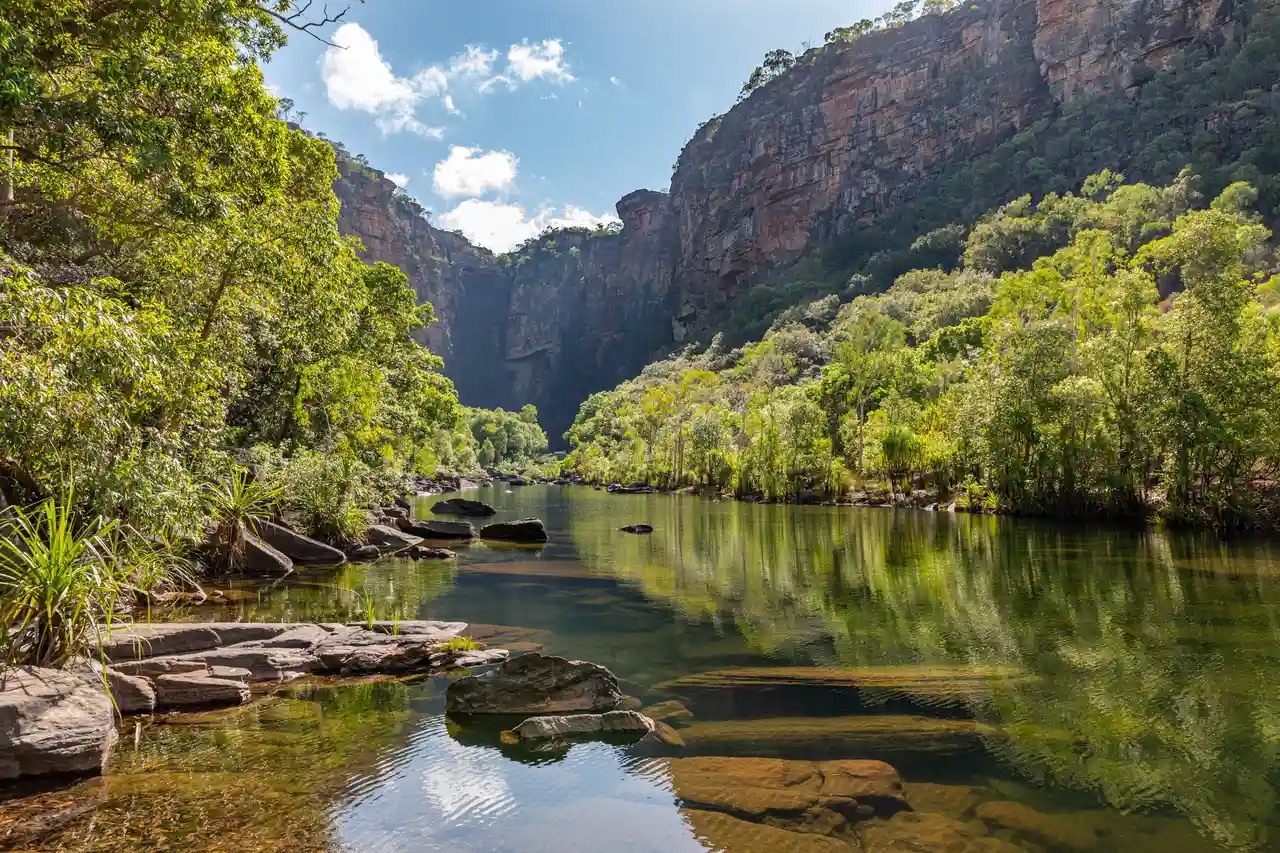
I always tell nature lovers heading to Australia that Kakadu National Park is a must-see destination. Spanning over 20,000 square kilometers in the Northern Territory, this UNESCO World Heritage site combines ancient Aboriginal rock art, diverse wildlife, and six distinct ecosystems – from wetlands to stone country. You’ll find saltwater crocodiles swimming in billabongs, wallabies hopping across floodplains, and thousands of migratory birds making their home in the park’s waterways.
Blue Mountains National Park, New South Wales
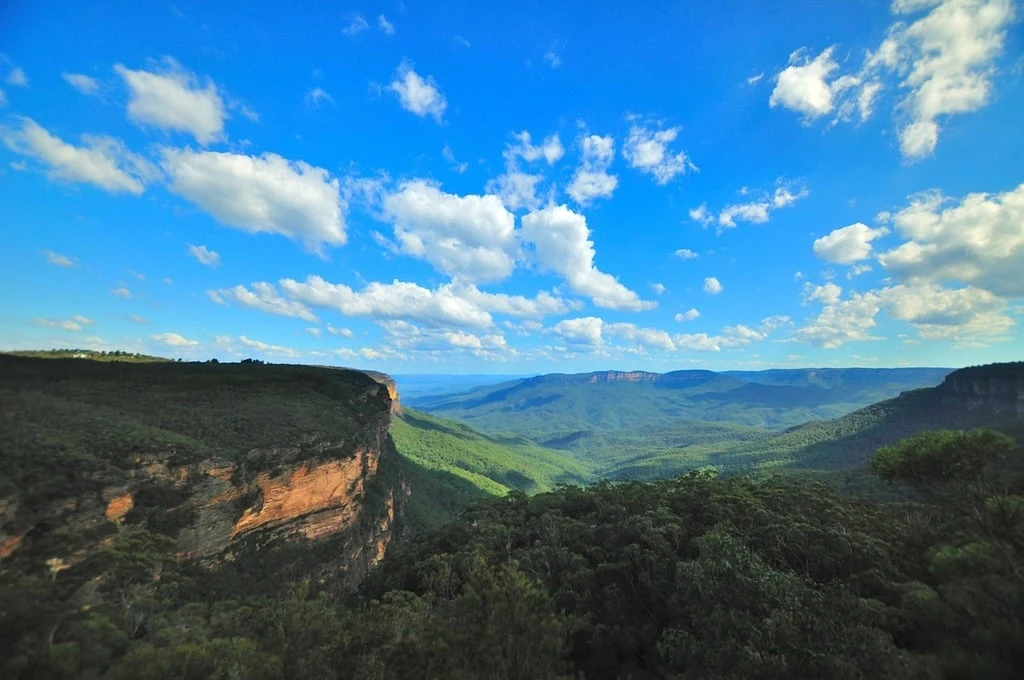
Step into a natural wonderland just 2 hours from Sydney at Blue Mountains National Park, where sandstone cliffs and eucalyptus forests stretch as far as the eye can see. The famous Three Sisters rock formation stands tall against the blue-tinged horizon, while hiking trails like the Grand Canyon Walk take you through deep valleys and past trickling waterfalls. For a bird’s eye view, hop aboard the Scenic World cable car, which glides above the ancient rainforest canopy. When you need a break, stop by the charming mountain town of Katoomba, where cozy cafes serve up hot chocolate and fresh scones with views of the misty valleys below.
Uluru-Kata Tjuta National Park, Northern Territory
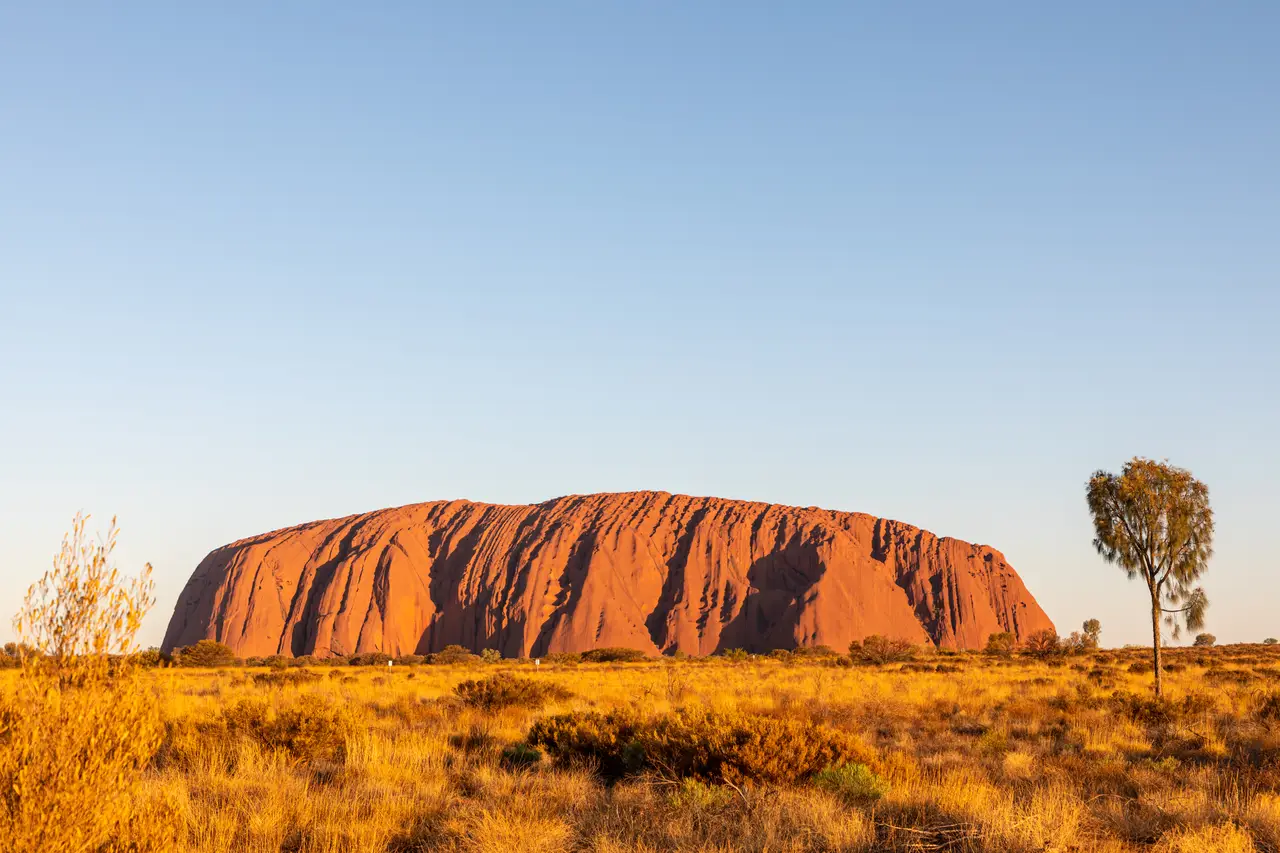
Many travelers journey to Uluru-Kata Tjuta National Park to see the massive red rock formation of Uluru, but this sacred place offers much more than its famous sandstone icon. The park’s landscape features the 36 dome-shaped rocks of Kata Tjuta, traditional Aboriginal rock art sites, and vast desert plains that come alive with wildflowers after rain. At sunrise and sunset, the rocks shift through different shades of red, creating photo opportunities that draw visitors from around the world. While most people come for quick viewing of Uluru, those who stay longer can explore the park’s walking trails, learn about indigenous culture through guided tours, and spot native wildlife like red kangaroos and thorny devils.
Did you know?
Did you know that Uluru, the massive red rock formation rising 348 meters above the desert floor, actually extends around 2.5 kilometers beneath the ground – similar to how an iceberg has most of its mass underwater? The famous landmark isn’t just a single rock either – it’s part of a larger complex that includes 36 dome-shaped rock formations called Kata Tjuta, which local Aboriginal people have considered sacred for over 30,000 years.
Daintree National Park, Queensland
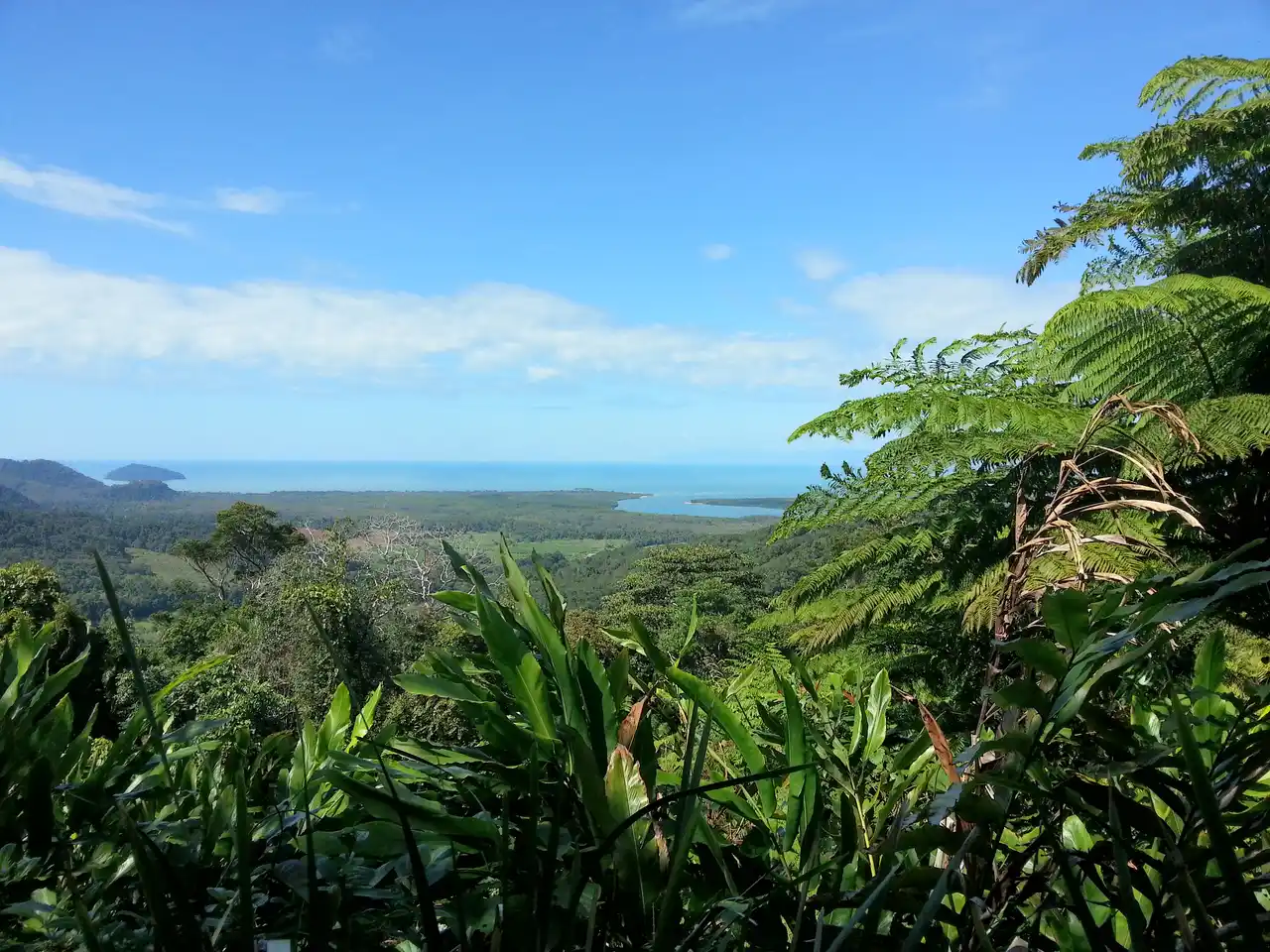
Many nature enthusiasts head to Daintree National Park for its ancient rainforest, but this tropical paradise is also home to one of Australia’s most diverse ecosystems. The park, which meets the Great Barrier Reef at the coastline, features rare plant species that have existed since dinosaur times. Visitors can explore the forest canopy on elevated walkways, spot unique wildlife like cassowaries and tree kangaroos, or take guided walks to learn about Aboriginal culture at Mossman Gorge. While the summer months bring frequent rainfall and higher humidity, Daintree’s natural wonders can be experienced year-round through activities like river cruises, birdwatching, and photography tours.
Freycinet National Park, Tasmania
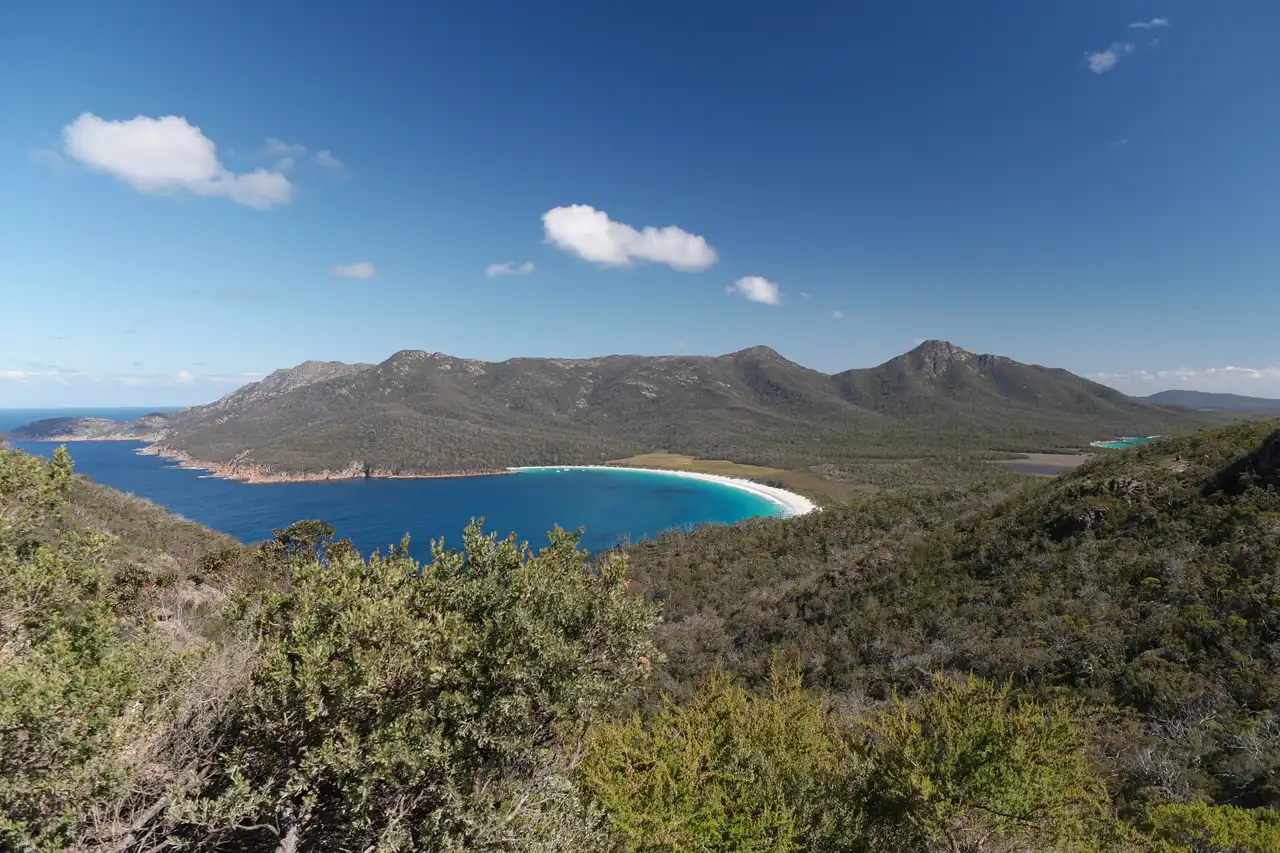
Tucked away on Tasmania’s east coast, Freycinet National Park feels like a little slice of Mediterranean paradise at the bottom of the world. Pink granite peaks known as the Hazards rise straight from the sea, while perfect white sand beaches curve around crystal-clear bays. Unlike other coastal parks in Australia, Freycinet lets you experience both mountains and ocean in one compact area. The park’s most famous resident is Wineglass Bay, a perfectly curved beach that lives up to its name – though you’ll have to earn those views with a short but steep hike up to the lookout. Because of its unique geography, the park has become a haven for rock climbers and kayakers, while the nearby waters host dolphins, whales, and seals going about their daily business.
Bet You Didn’t Know:
Did you know that Freycinet National Park is home to Wineglass Bay, a perfectly curved beach shaped exactly like a wine glass when viewed from above? The park’s pink granite mountains, known as “The Hazards,” get their rosy color from red feldspar crystals, giving this corner of Tasmania its distinctive glow at sunrise and sunset.
Royal National Park, New South Wales
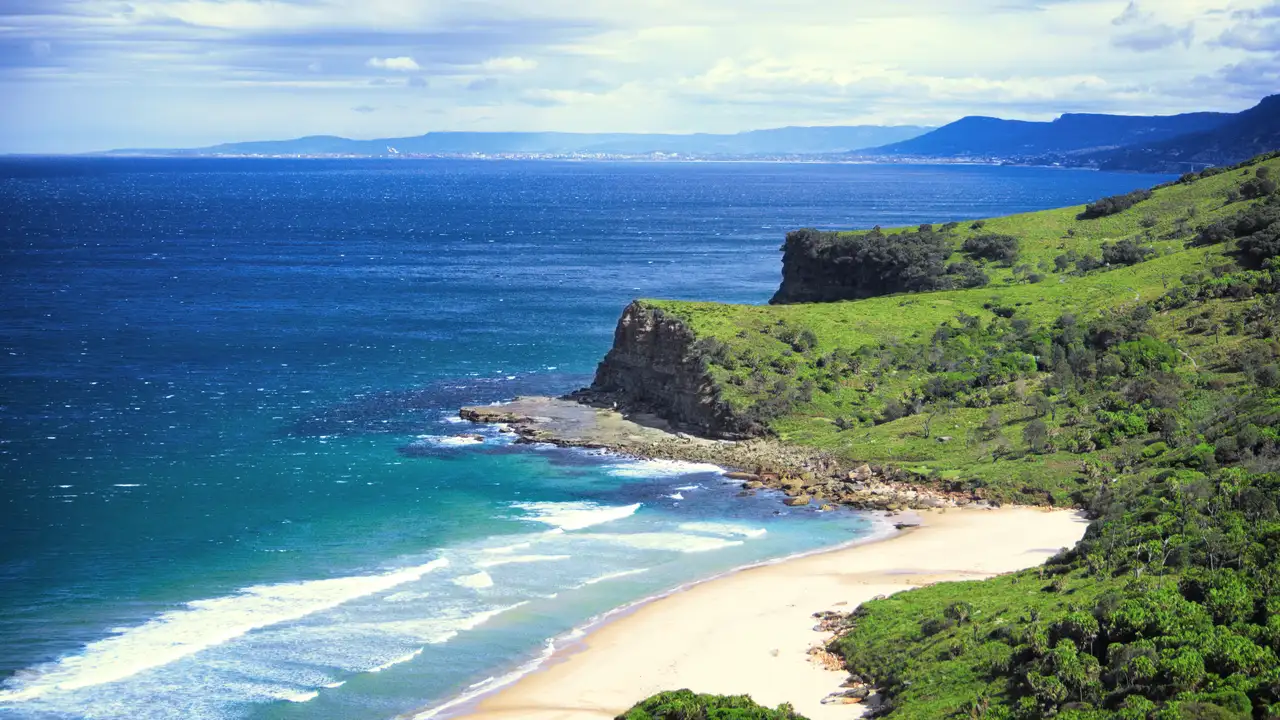
Just outside of Sydney lies Australia’s oldest national park and one of its most beloved outdoor playgrounds. The Royal National Park stretches along 16,000 hectares of coastal cliffs, hidden beaches, and eucalyptus forests that have drawn nature lovers since 1879. The park’s main draw is the Coast Track, a two-day trek that hugs dramatic sandstone cliffs and passes through native bushland teeming with wildlife. While many visitors come for the Instagram-famous Figure 8 Pools, the real magic happens when you venture deeper into the park’s network of trails, discovering secluded waterfalls and spotting wallabies hopping through the undergrowth. It’s not just a quick day trip destination – give yourself time to paddle through mangroves, surf at Garie Beach, or watch migrating whales breach offshore between May and November.
Cradle Mountain-Lake St Clair National Park, Tasmania
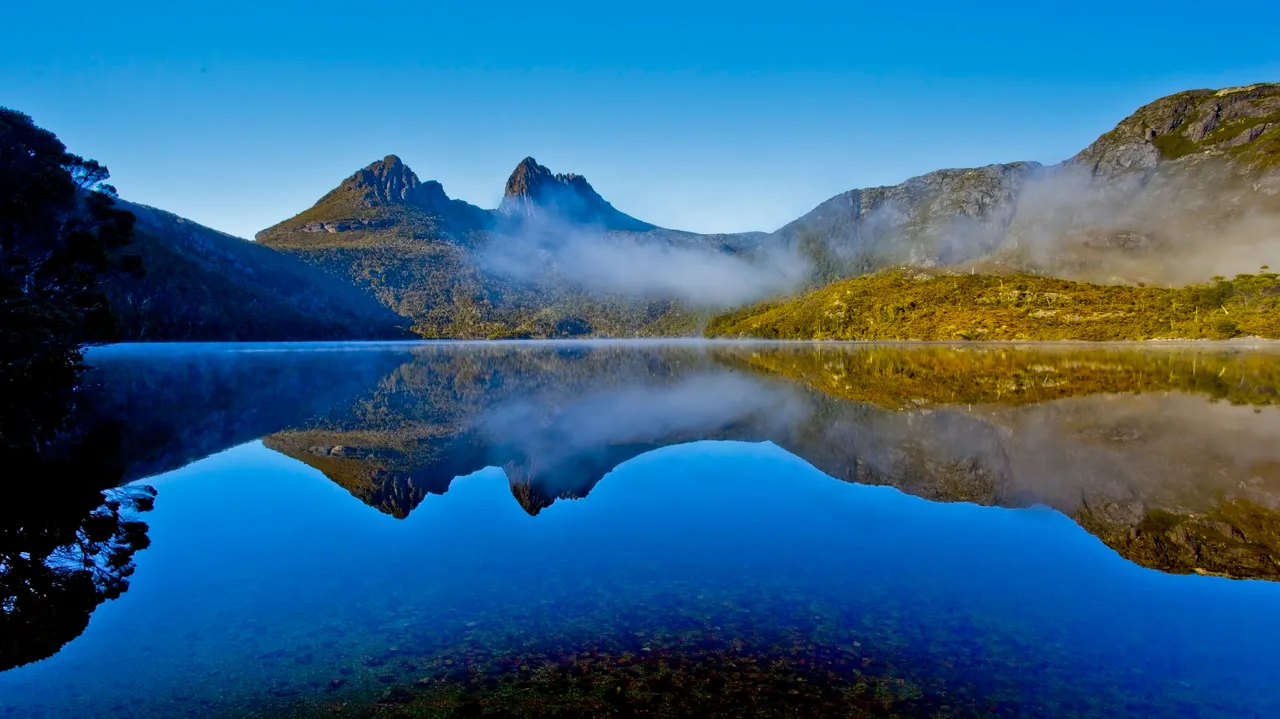
If you’re looking to experience Tasmania’s wild heart, Cradle Mountain-Lake St Clair National Park needs to be on your list. Located in the central highlands, this ancient landscape features the jagged peaks of Cradle Mountain, mirror-like lakes, and thick forests full of wombats and wallabies. The park is home to the famous Overland Track, a six-day hike that takes you through some of Australia’s most beautiful alpine scenery.
Wilsons Promontory National Park, Victoria

Located at the southernmost tip of mainland Australia, Wilsons Promontory National Park draws visitors with its collection of secluded beaches and granite mountains that rise dramatically from the sea. The park serves as both a coastal retreat and a wilderness playground, where travelers can spot kangaroos and wombats along walking trails or watch migrating whales from the shoreline. While many come for the popular Squeaky Beach, known for its pure white sand that actually squeaks underfoot, the park offers over 80 kilometers of walking tracks through temperate rainforest and along rugged coastline. The Outdoor Education Group runs regular programs throughout the year, but visitors can easily create their own adventures by camping at Tidal River, hiking Mount Oberon for bay views, or exploring the park’s hidden coves by kayak.
Flinders Ranges National Park, South Australia
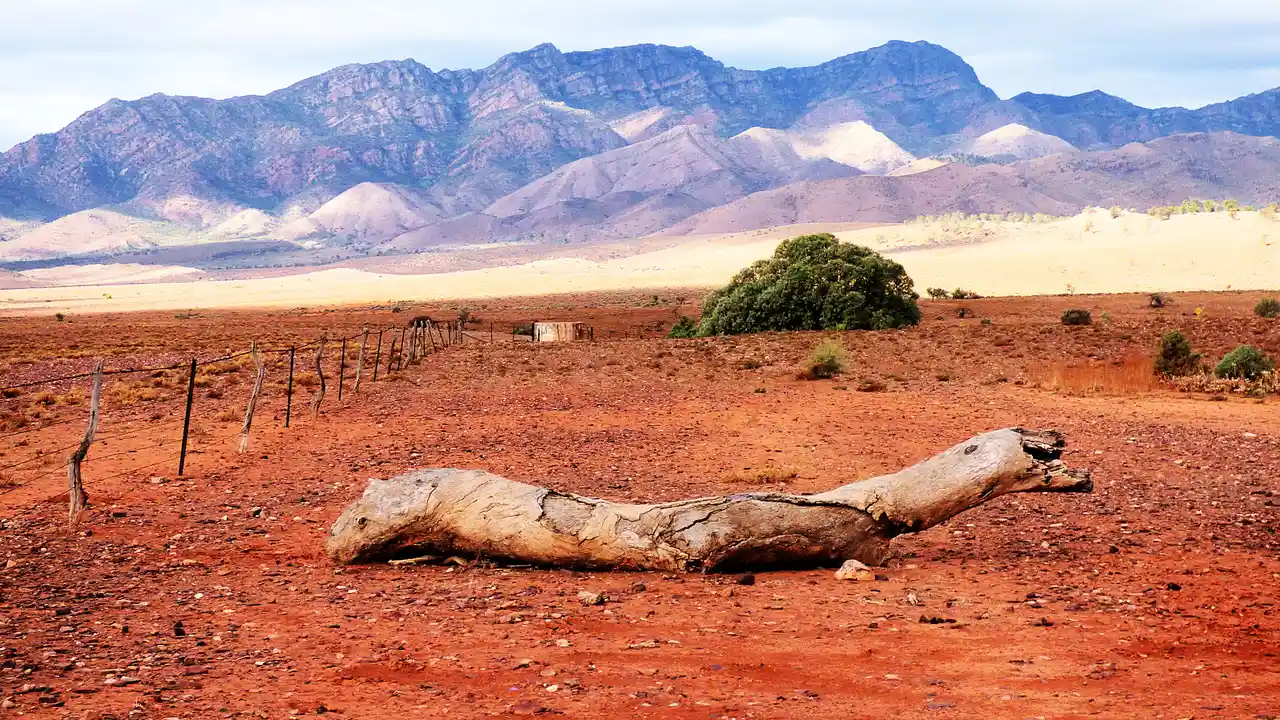
In South Australia’s outback, about 450 kilometers north of Adelaide, lies Flinders Ranges National Park. Like many places in the Australian interior, you’ll find red rocks and rugged landscapes, but what sets this park apart is its ancient geological story. The centerpiece is Wilpena Pound, a massive natural amphitheater that looks like a crater from above but is actually the remains of mountains older than the dinosaurs. Aboriginal people have called this land home for over 49,000 years, and you’ll find their rock art scattered throughout the park. Thanks to the clear outback skies and minimal light pollution, it’s become a favorite spot for stargazers and photographers who come to capture the Milky Way stretching over the ancient peaks.
Great Sandy National Park, Queensland
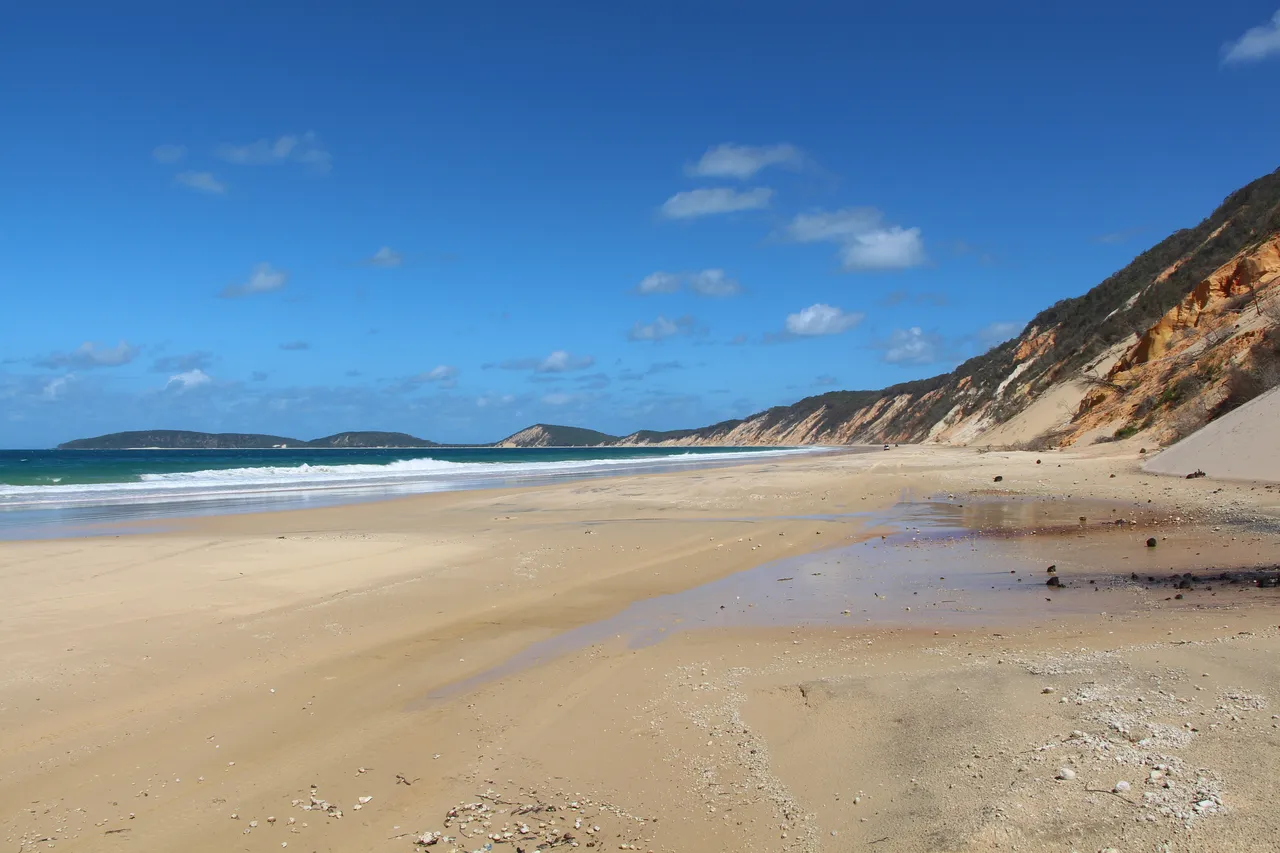
Many visitors flock to Great Sandy National Park for its famous Rainbow Beach, where colorful sand cliffs tower above the shoreline, but this coastal wonderland offers much more than beach views. The park stretches across two distinct sections – Cooloola and Fraser Island – where ancient sand dunes, clear freshwater lakes, and thick rainforests create an outdoor playground. You can cruise along the beach in a 4WD vehicle, spot whales during their migration season, or hike through the Cooloola Great Walk’s winding trails. While summer draws crowds to the swimming spots and camping areas, the park’s diverse landscape and rich Aboriginal heritage make it worth exploring any time of year.
Grampians National Park, Victoria

The first time I visited the Grampians National Park was on a cool autumn morning in 2019. Located in western Victoria, about three hours from Melbourne, this ancient landscape stretches across 167,000 hectares of sandstone mountains and dense bushland. Indigenous rock art sites dot the park’s many caves and overhangs, telling stories that go back thousands of years. Along the walking trails, you’ll spot kangaroos hopping between the eucalyptus trees, while colorful wildflowers carpet the ground in spring. The park’s crown jewel, MacKenzie Falls, flows year-round, creating a natural oasis where water cascades down dark rock faces into pools below. From the Boroka Lookout, the view spans across the entire park, showing off layers of rugged peaks that seem to fade into the horizon.
Karijini National Park, Western Australia
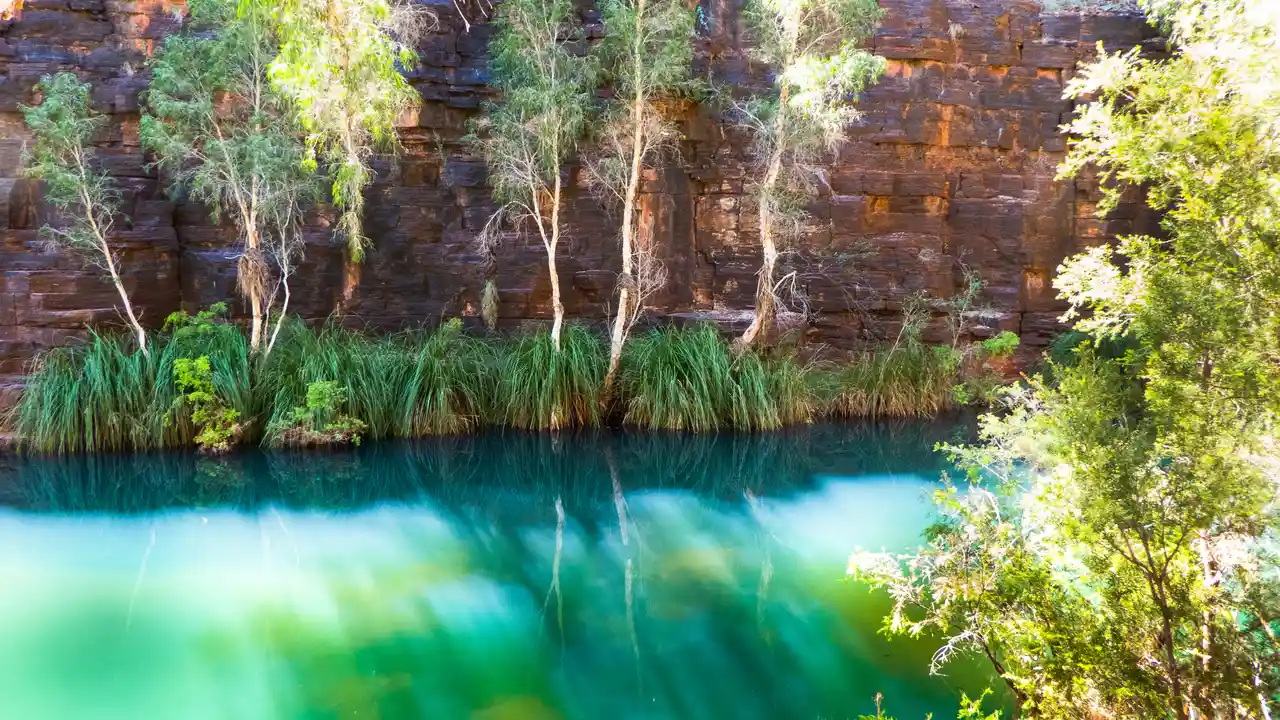
When it comes to exploring Australia’s outback, Karijini National Park stands out as one of the country’s most remarkable treasures. This ancient landscape in Western Australia’s Pilbara region features deep gorges carved through red rock over millions of years, creating a maze of natural swimming holes and waterfalls. You’ll find yourself wandering through narrow canyons where layers of rock tell stories from 2.5 billion years ago, and cooling off in crystal-clear pools nestled between towering cliff walls. It’s not an easy place to reach – you’ll need a sturdy vehicle and a good map – but the reward is access to some of the most unique geological formations in the Southern Hemisphere, where you can hike, swim, and camp under star-filled desert skies.
Port Campbell National Park, Victoria
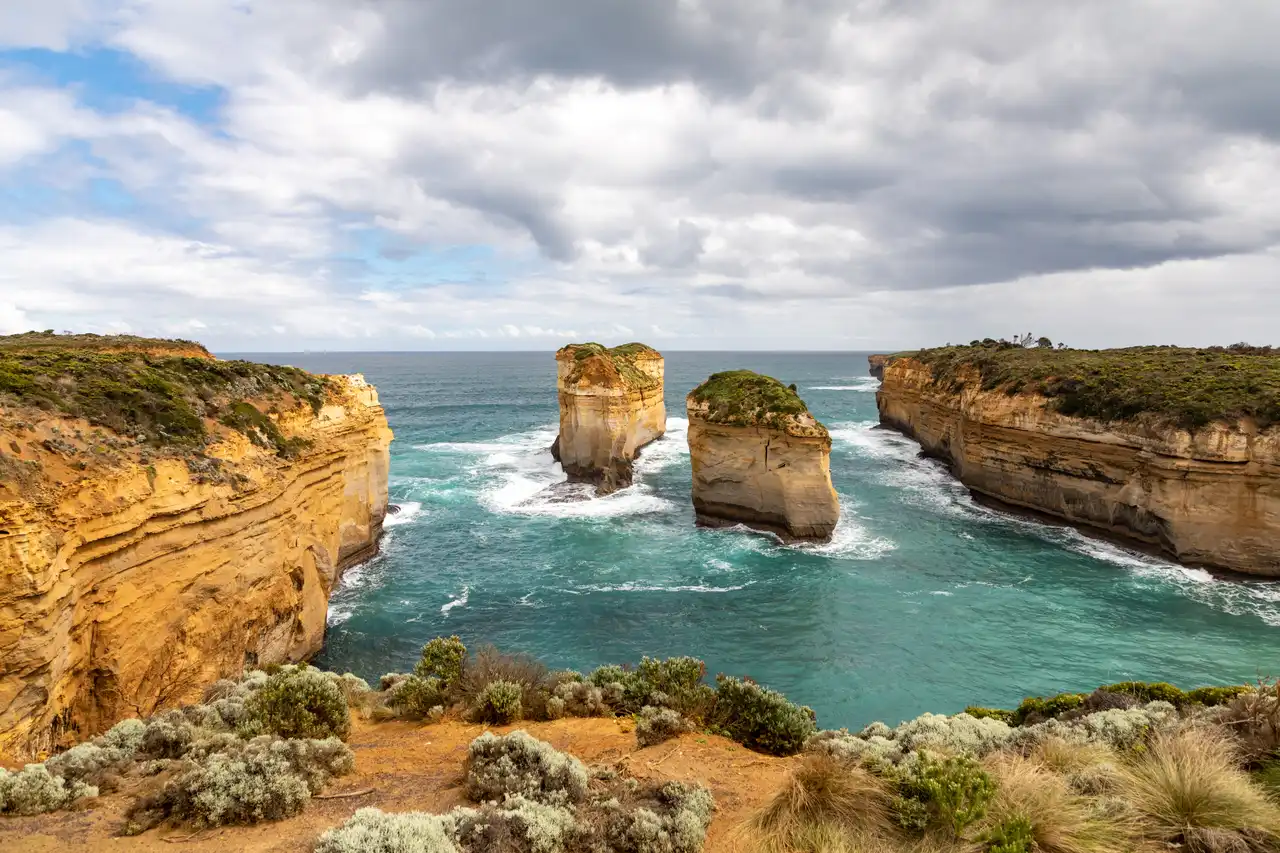
Port Campbell National Park, stretching along Victoria’s southwestern coast, first caught my eye during a road trip back in 2019. Part of the iconic Great Ocean Road, this coastal gem is home to the famous Twelve Apostles – those massive limestone stacks that rise from the Southern Ocean like ancient sentinels. The park’s rugged coastline features dramatic cliffs carved by waves over millions of years, creating natural sculptures like Loch Ard Gorge and London Bridge. Walking trails wind along the limestone bluffs, offering views of the ocean that seem to stretch forever, while sheltered bays below hide pristine beaches where few tourists venture. The park really comes alive at sunrise when the first light paints the limestone formations in shades of gold and amber.
Purnululu National Park, Western Australia
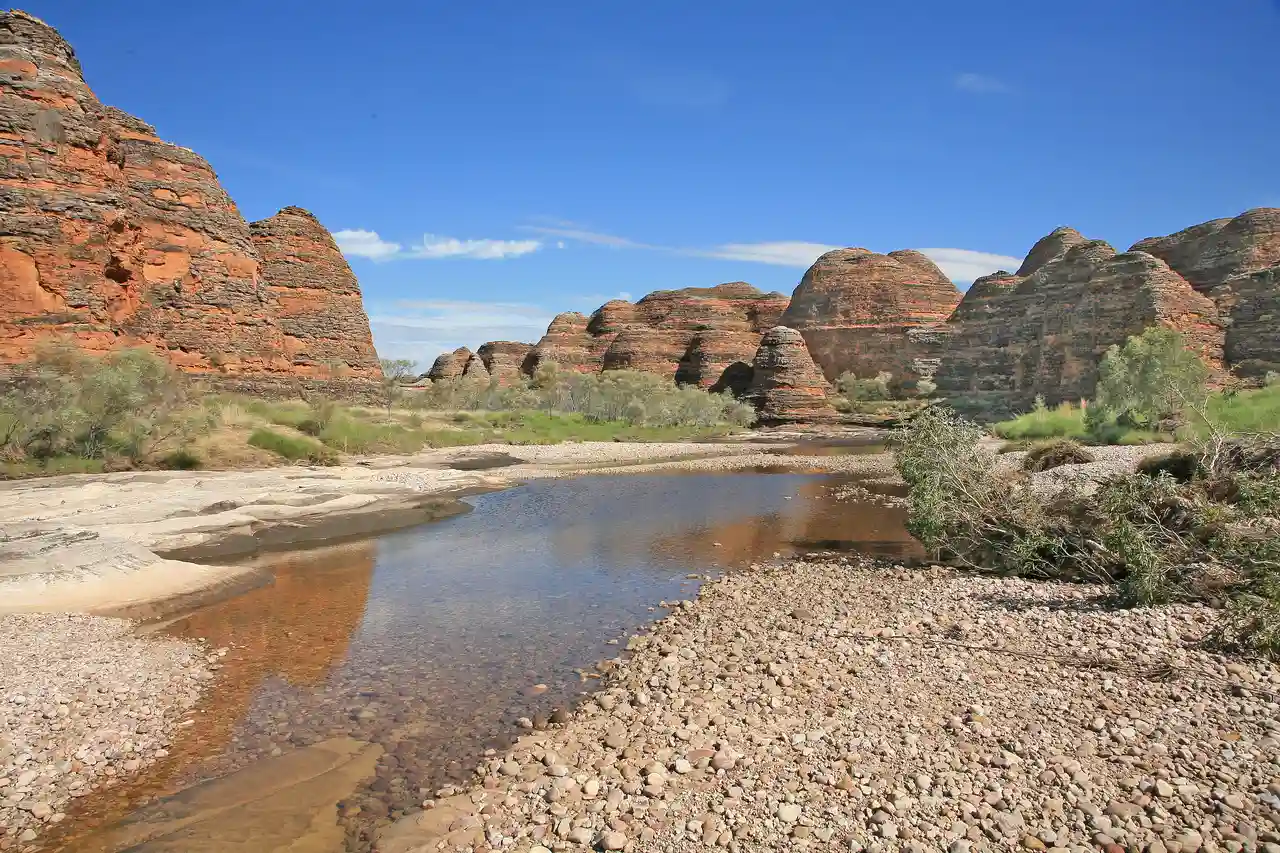
Ever seen a beehive made of orange and black stone? That’s what you’ll find at Purnululu National Park, where the famous Bungle Bungle Range rises from the earth like giant striped domes. Hidden away in Western Australia’s Kimberley region, this ancient landscape remained a secret from the outside world until 1983. Today, visitors can walk through narrow canyons between towering rock formations, shaped by 350 million years of weather and time. The traditional Aboriginals have known about this special place for thousands of years, and when you’re standing beneath these massive rock towers, listening to the wind whisper through the gorges, you’ll understand why they consider it sacred ground.
Alpine National Park, Victoria
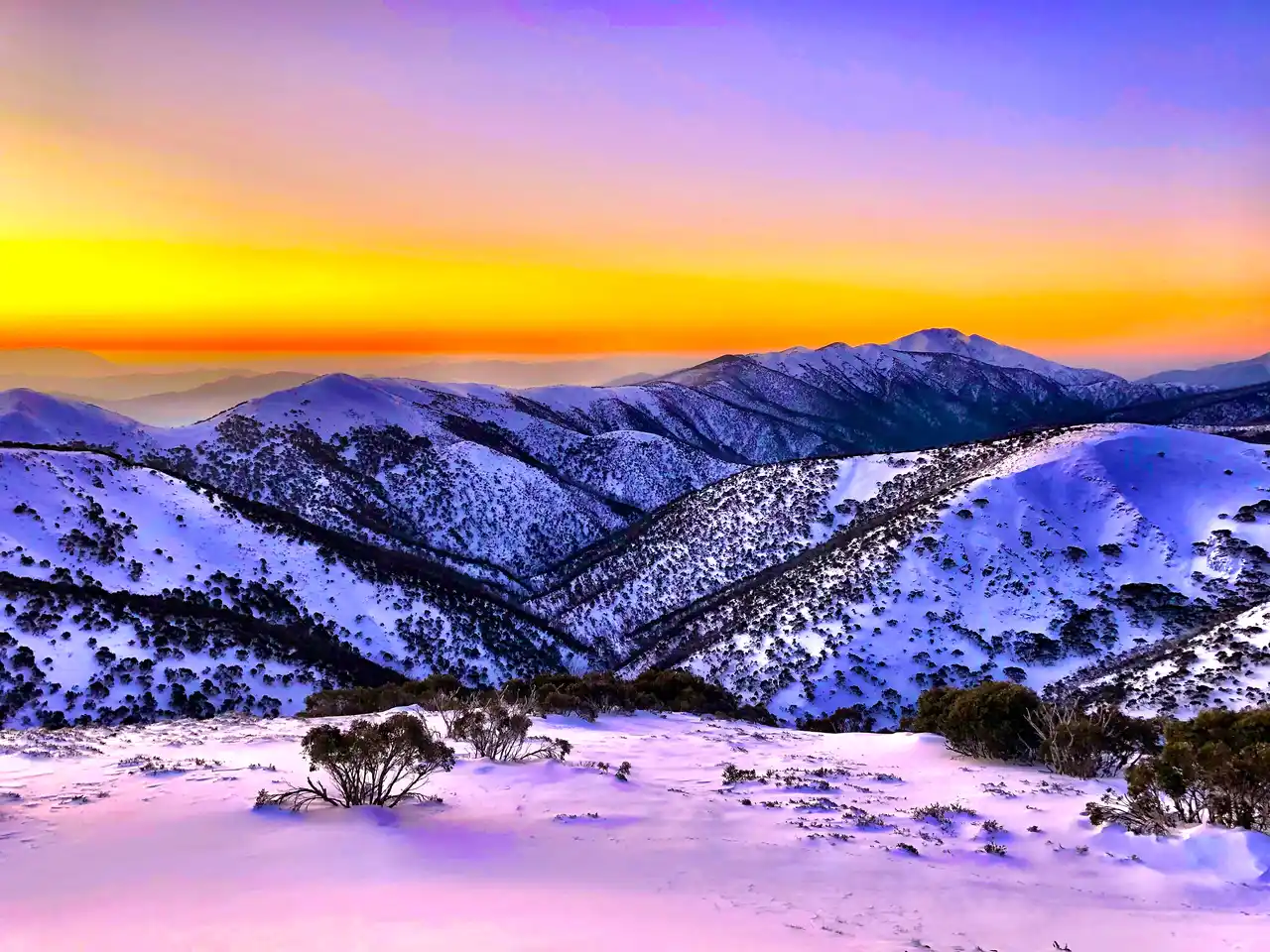
Located in the heart of Victoria’s rugged highlands, Alpine National Park holds the crown as the state’s largest national park. I first explored its sprawling wilderness in 2019, drawn by tales of snow-capped peaks and wildflower-dotted valleys. The park stretches across 646,000 hectares of the Australian Alps, connected by a network of walking trails that wind past crystalline mountain streams and ancient snow gum forests. During winter, the slopes of Mount Hotham and Mount Feathertop transform into a playground for skiers, while summer brings hikers and mountain bikers to tackle the challenging terrain. The historic cattlemen’s huts scattered throughout the park tell stories of early European settlers, standing as quiet witnesses to the changing seasons and offering shelter to modern-day adventurers exploring this corner of Victoria’s high country.

